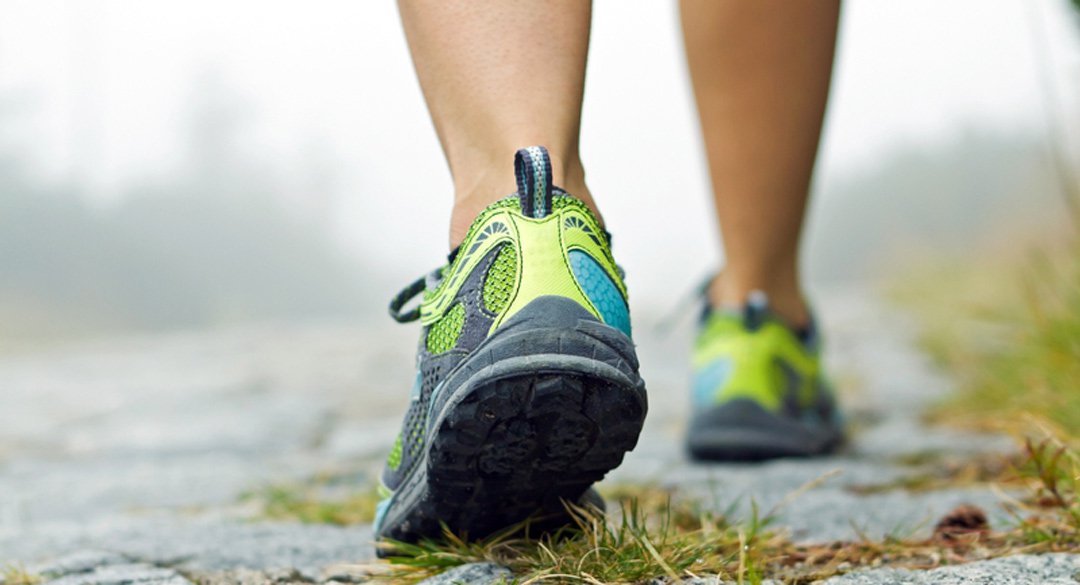
Many people associate poison oak, poison ivy, and poison sumac with the summer season, but as long as the weather is nice, these plants can pose a problem for any of us who enjoy the great outdoors.
What are poison oak, ivy, and sumac?
Poison oak, poison ivy, and poison sumac are three species of plants whose leaves, stems, and roots contain an oil with a sticky, allergenic substance called urushiol that can cause a reaction when it touches human skin. Urushiol sticks easily to anything it comes in contact with, including skin, clothing, and pets, and may cause an itchy rash upon contact.
Where are these plants found?
Poison oak is found primarily on the Western coast of the US. It grows as both a shrub and a vine and is widespread throughout the mountains and valleys of California. It generally doesn’t grow at elevations above 5,000 feet.
Poison ivy is common across much of North America. It’s found in the eastern Canadian provinces, all of the states east of the Rocky Mountains, and in some mountainous regions of Mexico.
Poison sumac is less common than poison oak and ivy and is found in wetland areas of the Eastern US.
What do the plants look like?
Poison oak is characterized by three lobulated leaves attached to each node on a stem. The leaves can have a waxy appearance and will change colors from green in the summer and spring to yellows and reds come fall.
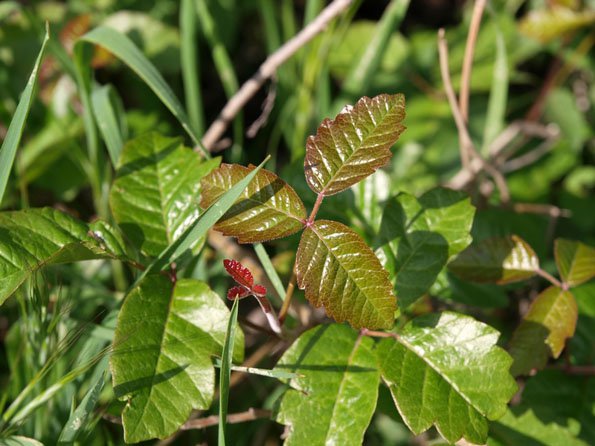
Like its western counterpart, both the size and shape of poison ivy varies, but the climbing vine variety is most common. Poison ivy also has three leaves on each leaflet but it doesn’t have serrate (notched) leaves. The leaves may have a waxy appearance, a hairy underside, and seasonal change in color.
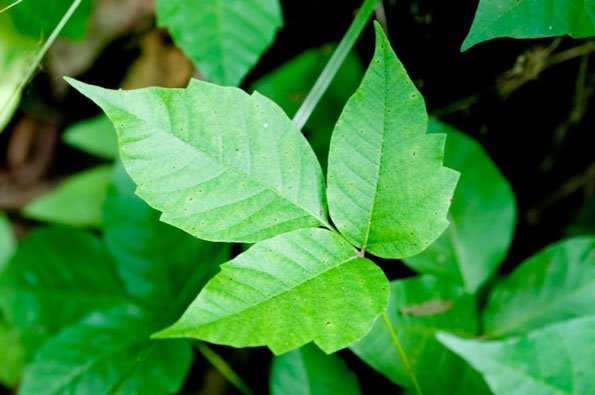
Poison sumac grows only in swampy areas. It grows as a small shrub or tree and may be anywhere from 5 to 20 feet tall. Common characteristics include red stems and approximately 7 to 9 smooth (not lobed) leaves that are arranged in pairs.
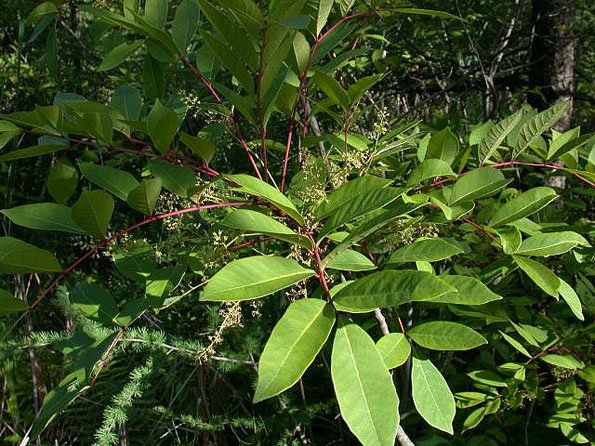
Photo credit: Jennifer Jordan via Flickr. Some rights reserved.
What are the symptoms of poison oak, ivy, and sumac exposure?
The first time a person comes in contact with poison oak, ivy, or sumac, a reaction doesn’t usually ensue. The first exposure typically sensitizes the person to urushiol so that on subsequent encounters, a rash may develop, usually within 12 to 48 hours. In some cases, however, because urushiol is so potent, a reaction can occur on the initial exposure. At least 50 percent of the population will react to the oil of these plants if exposed.
Symptoms include red, raised streaking where the oil has come in contact with the skin. Tender, fluid-filled blisters may develop, and may burst and ooze. After the blisters burst, they crust over and the skin begins to heal. Throughout the entire course of the rash, the skin is typically severely itchy.
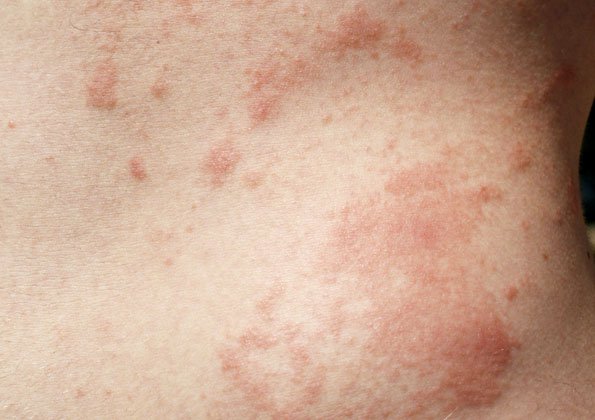
Direct contact with the plant or other surfaces with urushiol on them aren’t the only ways you can develop symptoms. The smoke from burning poison oak, ivy, or sumac also contains urushiol, so inhaling it can irritate your nasal passages and cause severe inflammation of the lungs.
Once the rash appears, it can last as long as two to three weeks and will eventually resolve on its own without treatment.
What’s the treatment for poison oak, ivy, and sumac?
The treatment for poison oak, ivy, and sumac depends on the severity of your symptoms. Mild cases can be treated with over-the-counter medications aimed at minimizing itching.
Antihistamines such as Benadryl can be taken orally. However, you should avoid using topical Benadryl cream for large rashes, as this can sensitize your immune system in much the same way that urushiol does, potentially causing a severe reaction if you were to take oral Benadryl later. The skin rash and itching triggered by urushiol aren’t caused by histamine release, so the benefit of using an antihistamine may stem primarily from making you drowsy–so non-drowsy antihistimine medications like Claritin won’t be helpful. Low-potency steroid creams available over the counter will probably do little good; if you are experiencing discomfort, you’ll need to see your primary health care provider for a prescription for a more potent cream. Drying agents like calamine lotion can help relieve itch and dry seeping areas. Oatmeal baths can also be soothing and provide some relief.
When should I come in for an appointment?
More severe or extensive cases–such as fluid-filled blisters that encompass large surface areas–as well as situations in which the rash involves the face and/or genitals, may require treatment with oral steroids to help reduce the severity of symptoms and shorten the course of illness. Your clinician will likely prescribe a 21-day course of steroids; shorter courses are often inadequate and lead to a rebound exacerbation of the rash when the drug is stopped.
Be sure to watch for any signs of infection as the rash heals, including increased redness and tenderness of the skin, warmth, and/or red streaking.
What can I do at home to lessen the chance of developing a severe rash?
As soon as you can after being exposed to the plant, wash all affected areas with warm, soapy water. Some over-the-counter soaps, such as Technu or Zanfel, are designed to help remove the plant oils from human skin, but regular soap works, too. Washing your skin within 10 minutes of exposure can minimize your risk of a reaction.
All exposed surfaces–including your skin, clothing, car seats, and even pets–should be washed as well. Although pets are unaffected by the oil, they can carry it on their fur and easily pass it to humans. Unless thoroughly washed off, the oil from the plants can remain on objects for years, causing symptoms when you come into contact with the oil again.
What preventive measures can I take to avoid getting the rash?
There are a number of steps you can take to protect yourself against poison oak, ivy, and sumac. Here’s what you need to know:
- Familiarize yourself with the poison oak, ivy, and sumac plants so that you can recognize and avoid contact with them
- Wear protective clothing such as long-sleeved shirts, long pants, and long socks in areas where plants are endemic
- Wear heavy-duty vinyl gardening gloves when working in areas where plants are common
- Remove plants that are near homes and areas where regular contact is possible
- Wash all skin, clothing and other surfaces that come into contact with the plants
- Apply barrier creams such Bentoquatam to help protect the skin from urushiol
- Avoid burning brush that contains poison oak, ivy or sumac
The One Medical blog is published by One Medical, a national, modern primary care practice pairing 24/7 virtual care services with inviting and convenient in-person care at over 100 locations across the U.S. One Medical is on a mission to transform health care for all through a human-centered, technology-powered approach to caring for people at every stage of life.
Any general advice posted on our blog, website, or app is for informational purposes only and is not intended to replace or substitute for any medical or other advice. 1Life Healthcare, Inc. and the One Medical entities make no representations or warranties and expressly disclaim any and all liability concerning any treatment, action by, or effect on any person following the general information offered or provided within or through the blog, website, or app. If you have specific concerns or a situation arises in which you require medical advice, you should consult with an appropriately trained and qualified medical services provider.